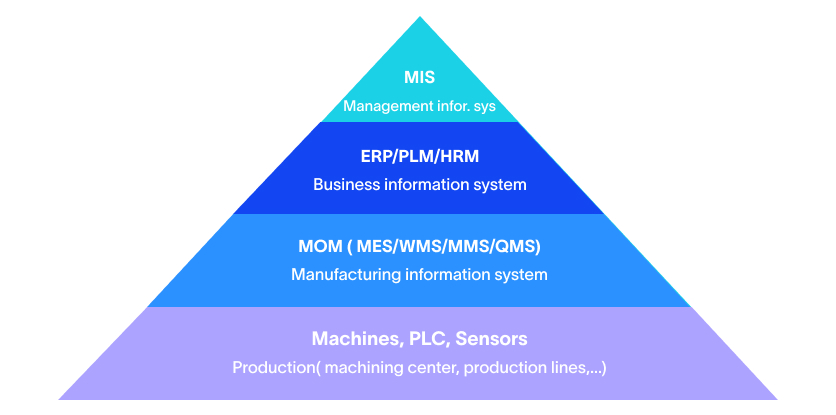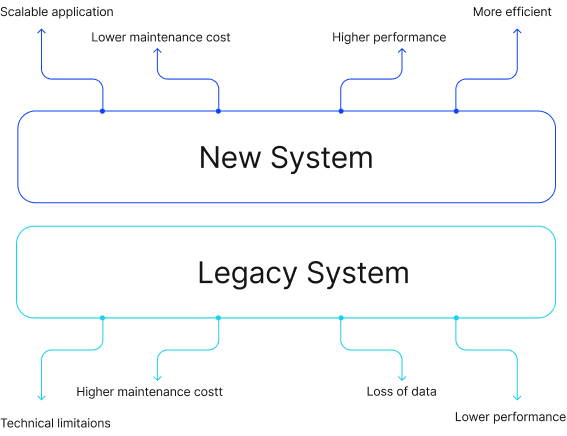What Real Predictive Maintenance Looks Like (And Why Most Are Still Reactive)
Blog
4 Min 56 Sec Read
Despite the growing availability of predictive maintenance solutions, many manufacturers remain reliant on outdated reactive and preventive methods.
Both reactive and preventive methods come with their own different set of limitations. Increased costs, downtimes, safety risks, and labor intensity are among some limitations manufacturers must outgrow.
That’s why it’s essential to use a better and more robust solution, like a predictive maintenance solution for manufacturers.
At INS3, we help bridge the gap between aspiration and execution—empowering maintenance teams with modern tools, data access, and system connectivity. Real predictive maintenance is not just a feature—it’s a shift in strategy, culture, and infrastructure.
Want fewer outages? Explore our Executive Guide on Predictive Analytics
The Problem with Preventive and Reactive Maintenance
Traditional reactive maintenance leaves operations vulnerable to unplanned downtime and emergency repairs. Meanwhile, time-based preventive approaches lead to scheduled downtime, over-maintenance, and wasted resources. Here’s more detail about how both preventive and reactive maintenance solutions and their limitations:
Problems with Reactive Maintenance:
The following are the common problems with reactive maintenance:
Increased Costs
Reactive maintenance triggers emergency repairs, and it leads to overtime pay, expedited parts delivery, and specialized technician costs. These are usually more expensive than scheduled preventive tasks.
Increased Downtime
Equipment failure is a common issue for the reactive maintenance process. When manufacturing and operational equipment fails, it creates process downtime, interrupts operations, and impacts the overall productivity of the manufacturing firm.
Safety Risk
Reactive maintenance systems react to disruptions and damage after they happen. Such a process has a massive safety risk. Manufacturing firms with a reactive maintenance process usually ignore issues and potential hazards that can lead to workplace accidents and injuries.
Shorter Asset Life
The products have a short upkeep and very little monitoring, which leads to a rapidly deteriorating product lifespan. Products start to depreciate at a faster rate as their actual condition is affected. Such a short life span of valuable assets leads to a heavy impact on the net assets.
Problems with Preventive Maintenance
The following are the major limitations and drawbacks of preventive maintenance:
Upfront Cost
A huge upfront cost is associated with the installation of a preventive maintenance program. It requires investment in resources, planning, and, most importantly, investing in new software and tools.
Labor Intensity
Aside from being investment-heavy, preventive maintenance is also resource-heavy. There must be dedicated labor hours for inspection, taking care of tasks, and part replacements. On top of upfront costs, the labor intensity of this process makes it a more investment-heavy process.
Potential for Over-Maintenance
Furthermore, there’s a chance of over-maintaining without any proper planning with a preventive maintenance process. Over maintenance leads to part replacements that are far from critical, causing waste to the budget allocated.
Both increase failure risks by ignoring the actual condition of assets. Without real-time insight, maintenance teams are stuck guessing.
What Predictive Maintenance Solutions Actually Require
Truly predictive strategies require more than good intentions—they demand the right technology stack.
This includes integrated predictive maintenance tools, tight SCADA system integration, real-time condition monitoring, and data-driven triggers that can anticipate issues before they disrupt production.
At INS3, we connect process data, sensors, and asset performance metrics with maintenance workflows to turn raw machine data into timely, actionable insight.
Want seamless SCADA integration? Start with these proven solutions.
Adding AI to the Predictive Maintenance Toolkit
More forward-looking manufacturers are now layering in AI and machine learning to enhance predictive maintenance solutions. By applying AI to real-time SCADA and historian data, organizations can uncover hidden patterns that even traditional condition-based approaches miss.
INS3 helps customers implement AI-driven techniques to analyze vibration signals, power draw, cycle time deviations, and environmental conditions.
These advanced models can predict anomalies, optimize alert thresholds, and continuously improve with new data. By embedding AI into SCADA-connected assets, we extend the power of condition-based maintenance and make maintenance optimization smarter and more proactive.
See how SCADA is reshaping manufacturing – Read the full article
Case Study: 50% Work Order Reduction with SCADA + CMMS
A mid-sized manufacturer worked with INS3 to integrate SCADA data into their CMMS system, enabling real-time, condition-based maintenance.
The result: a 50% reduction in unnecessary work orders and more efficient technician deployment. We provided both the technical implementation and the strategy—connecting data pipelines, optimizing alerts, and improving overall CMMS integration.
The return on investment was clear: better resource allocation, fewer failures, and a proven path to maintenance optimization.
Not sure between SCADA and IIoT? Discover the key differences
Implementation Strategy: From Monitoring to Action
INS3 delivers predictive maintenance solutions that work, starting with what manufacturers have and scaling as needed. The key areas of implementation include the following:
- Integrate SCADA-connected assets into your data ecosystem
- Apply AI models and condition logic to incoming data streams
- Set dynamic alerting thresholds and intelligent decision triggers
- Ensure OT/IT collaboration to streamline action and response
- Automate work order creation and escalation via CMMS integration
They start with a clearly outlined objective, build a robust data infrastructure for real-time data collection and secure their storage to develop predictive models through data analysis and machine learning.
It helps them ultimately implement these insights into actionable maintenance workflows. This strategy aims to decrease the chances of equipment failures and downtimes by predicting issues before they occur.
Here’s how INS3 implements the predictive maintenance process for advanced maintenance optimization:
Step 1: Define Objectives and Scope
First, they start by defining the objective of predictive maintenance integration and the scope that a client has. They map out the assets that will be integrated into the program.
Step 2: Data Collection and Integration
INS3 utilizes machinery to collect data from different sensors in real time. They gather information from different touchpoints such as vibration, oil analysis, and temperature.
Next, they form a foundation for predictive maintenance solutions by securing a storage for the data collected from different touchpoints. It forms the foundation for your predictive analytics.
Step 3: Data Analysis and Machine Learning
This is the phase where the collected data is put to use for analysis using AI tools and machine learning. INS3 examines the historical performance of the equipment and identifies patterns of failure. It helps them detect what generally causes failure and downtime.
Once the reasons and patterns of failure are identified, they develop predictive models to forecast different equipment issues.
Step 4: Monitoring & Software Implementation
This is the phase where INSe deploys critical assets that come with appropriate condition monitoring sensors. They also implement manual data collection tools if needed.
An integration of predictive maintenance solutions facilitates the use of developed models and insights to complete the processes of software implementation.
Step 5: Establish Maintenance Workflows & Workforce Training
At this phase, INS3 outlines the process of data flow across systems such as CMMS, MES, and ERP. The outline also includes how the users and teams will interact with the data.
Once the system is ready and operational, it comes down to developing training modules and learning material for maintenance, operation, and engineering. These modules help users understand the new systems in place, interpret predictive insights, and follow the updated workflows.
Step 6: Monitor, Adjust & Scale
Once the maintenance systems are ready and the teams learn to operate the new predictive maintenance system, the implementation of the new maintenance solution is ready. However, monitoring the system is just as important.
INS3 suggests building a regular monitoring manual to oversee if any updates are necessary. Furthermore, if the business needs to scale, it must include more assets accordingly.
From proof-of-concept to enterprise rollout, our approach emphasizes speed to value and long-term flexibility.
Predictive Maintenance Solutions with a Future-Ready Foundation
If your predictive maintenance strategy still relies on manual inspection or fixed schedules, now is the time to modernize. INS3 combines the best of SCADA system integration, AI-driven insights, and CMMS connectivity to deliver real-world results—reduced downtime, extended asset life, and measurable cost savings.
Whether you’re just starting your journey or looking to enhance existing systems, INS3 offers scalable solutions for digital transformation in maintenance. Let’s move beyond reactive and make predictive maintenance a competitive advantage.
Get Started Today
INS3 offers a complimentary maintenance readiness walkthrough and opportunity assessment to help you identify where predictive tools, SCADA connectivity, and AI can drive the most value. This includes a tailored study of your current systems and recommendations for quick wins and long-term improvements.

Agile MES: The Key to Unlocking Smart Manufacturing Success
MES is a computerized system used in manufacturing operations to track and document the transformation of raw materials into finished goods. An MES system typically manages and monitors work orders, equipment, materials, and personnel on the shop floor. The system provides real-time visibility into production processes, helps optimize manufacturing operations, and improves the overall efficiency of the manufacturing process.

Understanding OEE: The Key to Manufacturing Efficiency
In today’s competitive manufacturing landscape, improving efficiency and productivity is crucial for businesses to remain competitive. One of the key metrics used to measure manufacturing efficiency is OEE or Overall Equipment Effectiveness. In this blog, we will take a closer look at OEE and its importance in manufacturing.

How to Effectively Conduct a Legacy System Integration
Legacy system integration can be a daunting task, but it’s a necessary one for many manufacturers that rely on outdated systems to run their business. Integrating legacy systems with modern technology can improve efficiency, streamline processes, and save time and money. However, it’s important to approach the integration process carefully and methodically to ensure success.
Share on :
Keep On Reading
Subscribe to Our Newsletter
Subscribe to our weekly newsletters to get updates regarding our new production, behind the scene process of our art creation and much more.
After submitting this form you will receive an e-mail with a confirmation link that you must click to complete your request. Detailed information on processing and cancellation can be found in our privacy policy.

